X-as-a-Service: Accelerating Energy Transition with Servitization
Listen to this Article
mins | This voice is AI generated.
mins | This voice is AI generated.
X-as-a-Service: Accelerating Energy Transition with Servitization. Technological obsolescence risk for a company is getting more prominent with the rapid introduction of newer technologies. Digitization has further moved ahead at a breakneck pace which has made revolutionary changes to how businesses operate. These two phenomena together have led to increased servitization of many businesses, which is the essence of X-as-a-Service (X-a-a-S) – a collective referring to the model where customers pay for a service or an outcome instead of buying the product as a whole or in part. It is emerging as a new product strategy especially when the capital costs involved are significantly high or when there is a potential for a longer customer lock-in.
In this model, the XaaS provider establishes a service performance contract with a contractor whose job is to design, install & provide maintenance and monitoring service for XaaS provider. On the customer side, the XaaS provider will then have a service agreement with the customer who will make periodic payments for the use of the service. This payment will be used by the XaaS provider to run the business while committing a certain portion of it towards the payment of the contractor. This way, the model saves the end user from investing a huge sum in acquiring assets. Hence, no upfront capital costs are involved. XaaS providers can also ensure smart and enhanced use of assets using data analytics. Additionally, they will have the support of a specialized and experienced partner ecosystem without any long-term commitments.
The increasing need for servitization has emerged attractive across several industries. The power and utility sector, undergoing a major disruption due to renewables is also seeing newer service-based business models. Innovation in battery technology, heating and cooling, microgrids, and increased focus on the environment are other avenues that are further giving rise to new ‘X’s. This is further expected to accelerate the deployment of clean energy solutions for the energy transition.
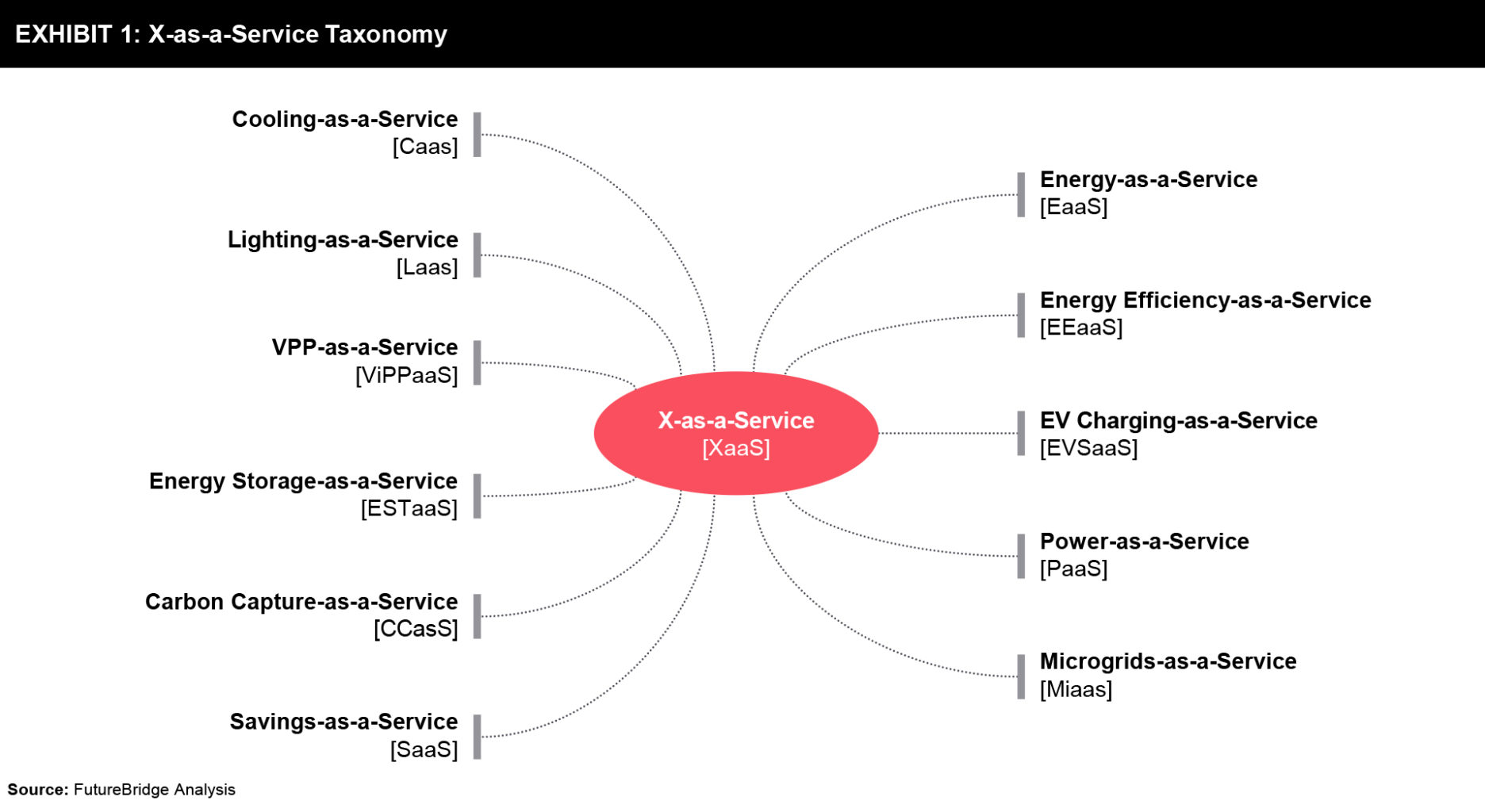

Some of the following models are particularly gaining interest from a spectrum of key players across the Energy and extended value chain.
This model provides the customer with energy services in exchange for a periodic payment. With the global economies focusing on decarbonization, businesses are looking for sustainable energy. While this need gets fulfilled through distributed renewables, their installation involves capital, which many business units do not want to incur. Here, the energy-as-a-service model comes as a savior to these businesses with an offering of paying only the operating cost.
 Increased adoption of the Internet of things, sensors and controls for collection of data, advanced analytics to identify usage patterns of the businesses and weather prediction, cloud platforms to manage data, automation & blockchain for secured payments have led to improved delivery of service. The Energy-as-a-service model finds its application in many segments of the energy industry from key players like Schneider Electric and Fortum.
Increased adoption of the Internet of things, sensors and controls for collection of data, advanced analytics to identify usage patterns of the businesses and weather prediction, cloud platforms to manage data, automation & blockchain for secured payments have led to improved delivery of service. The Energy-as-a-service model finds its application in many segments of the energy industry from key players like Schneider Electric and Fortum.
![]() One of the interesting examples of the EaaS model from Fortum uses the excess energy generated by distributed energy resource owners for charging EVs using a cloud-based charge and drive network. The credit for excess energy is provided into distributed energy resource owner’s charge and drive account. This account can be used by the owner at any of the 400 charging stations network of Fortum. This model has thus relieved Fortum of owning distributed energy source, whose energy is used for charging EVs.
One of the interesting examples of the EaaS model from Fortum uses the excess energy generated by distributed energy resource owners for charging EVs using a cloud-based charge and drive network. The credit for excess energy is provided into distributed energy resource owner’s charge and drive account. This account can be used by the owner at any of the 400 charging stations network of Fortum. This model has thus relieved Fortum of owning distributed energy source, whose energy is used for charging EVs.
Cooling as a service design accelerates deployment of clean cooling technology at scale by lowering upfront equipment costs and aligning incentives for the most efficient operations and maintenance. This model is currently being deployed as a potential solution in emerging economies across Africa and Asia. In the CaaS model, the tech provider sells the equipment to bank and in turn leases it from it while it offers the required service to its customers. There is sufficient financial assurance from the key stakeholders involved at all stages, which makes this model even more attractive.
When evaluating the options available for retrofitting 7000 AMK’s aging cooling system, the ESR-REIT company owners turned to Kaer to engage in a Cooling as a Service contract to benefit from the most reliable and sustainable solution. CaaS has the potential to significantly reduce cooling costs for customers and reduce electricity use and coolant leakage by almost half for technology providers and finance providers.
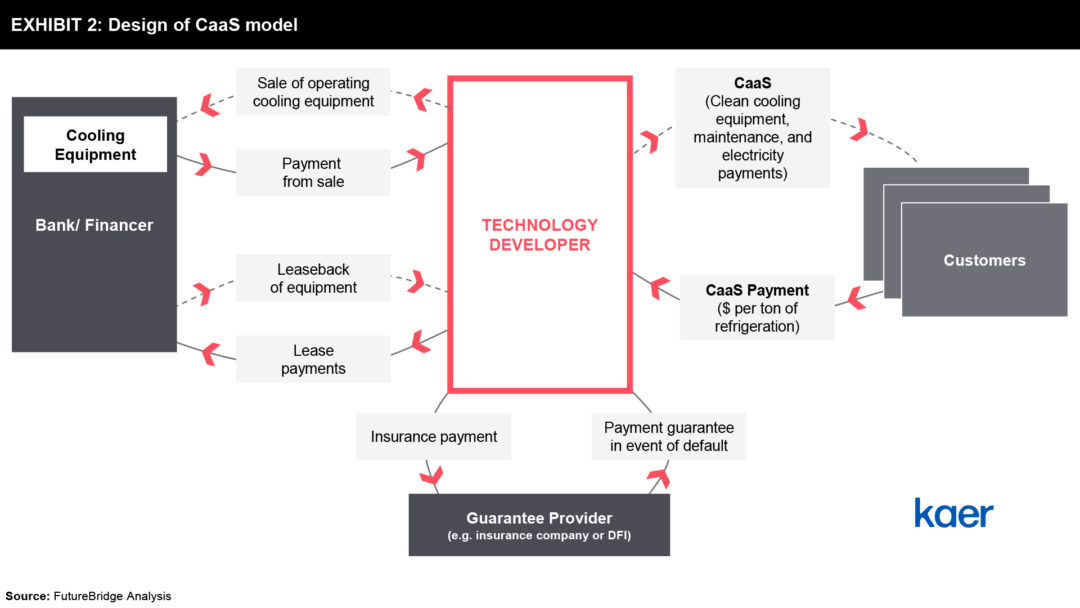

Lighting-as-a-service is mainly demanded by end-users from commercial, municipal, and industrial sectors. This model relieves the user of any upfront cost and less engagement of personal resources by the client as the maintenance and monitoring is done by the Light supplier itself. It also provides an opportunity to the client to have modern lighting technology solutions (Intelligent LED light systems or Daylight and shading technology) at the cost of a light supplier, thus significantly lowering down energy costs. Additional benefits in terms of reduction in carbon emission, healthier lighting, upholding legal requirements for clients, and recycling of lights are also provided by these light suppliers. The payment for the lighting service is done on a subscription basis.
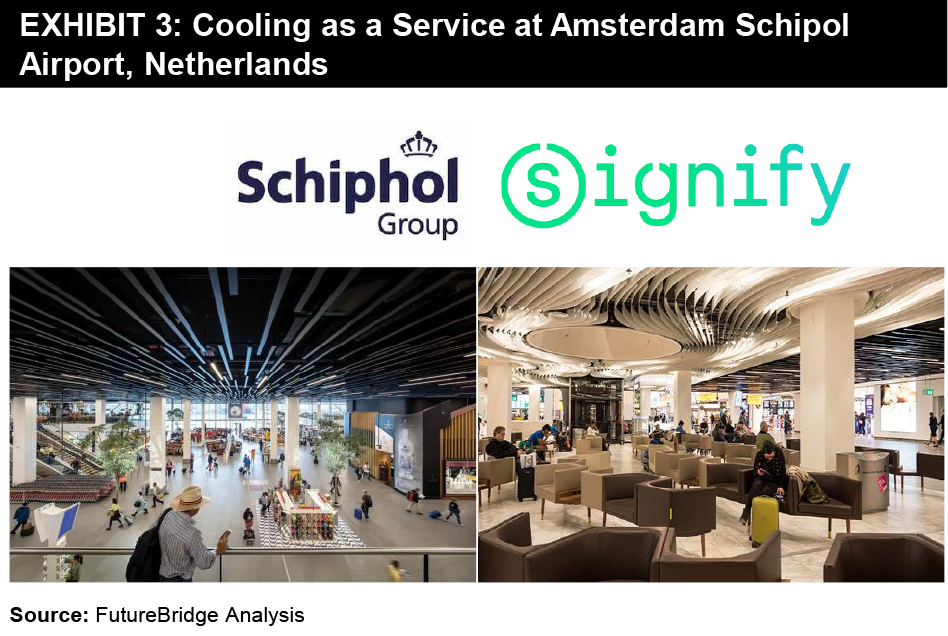
The Schiphol Airport in Amsterdam, Netherlands, has a contract with Signify (Philips Lighting) based on a LaaS based model. And in another example, Arcelor Mittal was assisted by Signify to improve the lighting condition for the workers and to reduce the lighting energy costs in the plant. Signify offered Luxis lighting which brought benefits in terms of energy savings, improvement in health and safety of workers, no maintenance cost, energy efficiency, and carbon offsetting to name a few.
It is the combination of an advanced battery storage system, a control, and monitoring system, and a service agreement between the parties involved to ensure the reliability of power for the client. In this, the client does not require an installation capital to avail the benefit of the energy storage system and the operation of the storage system by a third party leads to no operation and maintenance worries for the client. These agreements may be structured as a cost-sharing model or a fixed monthly payment over a contract term. Energy storage as a service offers many advantages to the client such as peak shaving, participating in ancillary market services, demand response, energy arbitrage to name a few.
Clean Energy Global combines battery storage, a universal IoT connectivity module, and the software and cloud solution into a flexible and safe system for universal energy storage. Using IoT, software, cloud solution and app facilitates communication and billing between users of energy packs and the operators. Through demand-driven rental service, the company offers a lower cost per kWh of stored energy. The clean energy pack can be used for uninterrupted power supply in homes, in electric cars, and in solar energy storage systems.
Energy efficiency as a service (EEaaS) is attracting large energy incumbents and building management value chain players – being an off-balance sheet financial solution where users pay for performance. In one of the structures, the customer and energy service agreement (ESA) providers enter into an agreement. The ESA providers develop, finance, and operate projects with customers paying for these services through realized savings. The ESA provider may sub-contract some of the works to ESCOs as per project requirements. Energy efficiency as a service has many benefits to offer to customers such as zero cost, savings from day one, performance improvements, and reduced carbon emissions.
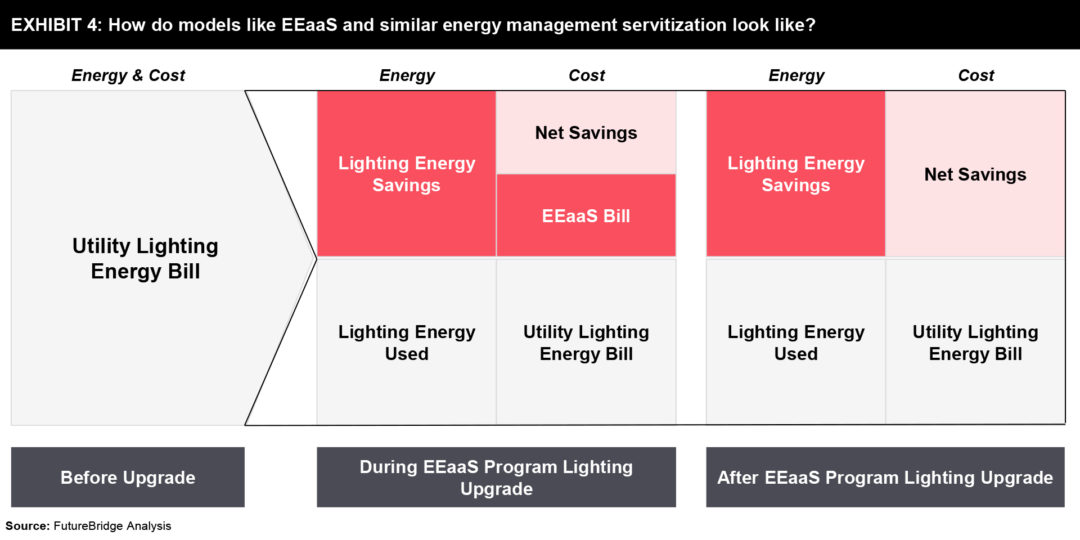

EEaaS typically requires replacing aging equipment with more efficient technologies. This becomes a challenge for many companies to justify this capital investment. In order to facilitate this investment, companies require a model to justify this investment. Using AT&T’s internet of things can help the EEaaS providers to accurately measure and model the energy savings if the investments are made. This model supported by IoT is being used by many EEaaS providers to carry out more such projects.
The energy industry will witness a massive acceleration towards servitization adoption. XaaS will be the new paradigm forcing each transformation in different sectors to ride on XaaS functions. The main goal of the XaaS model is to increase the value for the customer, enabling the customers to shift from high capital expenditure (CAPEX) to a more predictable operational expense (OPEX). This can also aid in the increased adoption and deployment of capital-intensive technologies that can enable a faster energy transition.
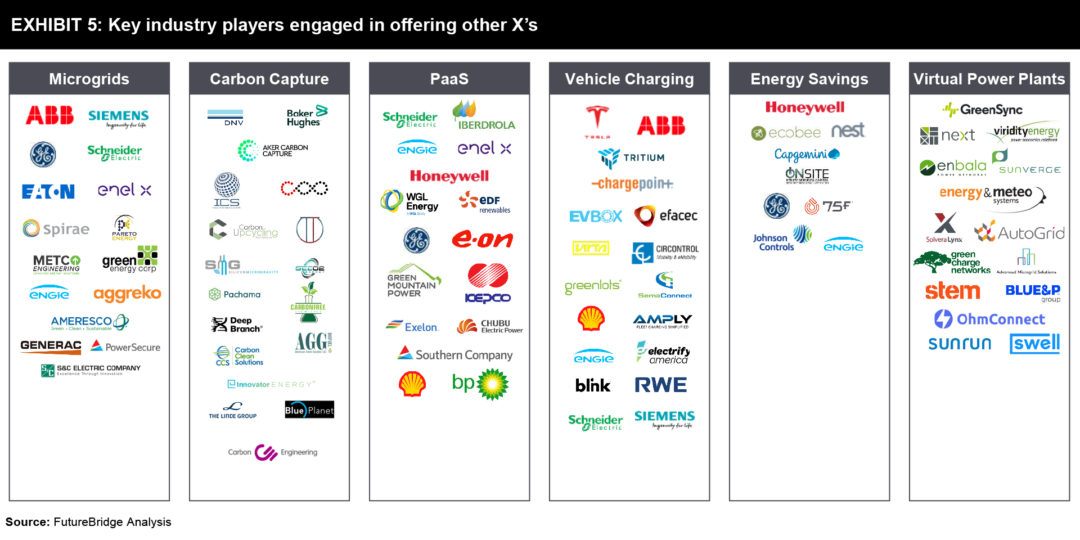

Share your focus area or question to engage with our Analysts through the Business Objectives service.
Submit My Business ObjectiveOur long-standing clients include some of the worlds leading brands and forward-thinking corporations.




























